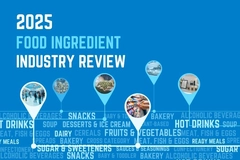
- Industry news
Industry news
- Category news
Category news
- Reports
- Key trends
- Multimedia
- Journal
- Events
- Suppliers
- Home
- Industry news
Industry news
- Category news
Category news
- Reports
- Key trends
- Multimedia
- Events
- Suppliers
Beyond Meat poised to change its name in a rebrand to revive plant-based sales

Beyond Meat is poised to change its name to “Beyond,” signaling a shift away from a “meat alternatives” perception to focus on alternative proteins as a whole. The name change plans come ahead of Beyond Meat’s second-quarter results, which are expected to be released on Wednesday.
The company wants to emphasize how it builds meat directly from plants, rather than simply mimicking meat products.
The decision to drop “Meat” from the name and the consequent rebrand followed a difficult period for the California-based company, which went public on NASDAQ in 2019.
Since that time, it has not made a profit.
Ditching “Meat” in corporate name & branding
One key strategy going forward is for the newly named Beyond to compete for more of the protein market.

Speaking to Food Ingredients First, Julian Cottee, senior corporate engagement manager, at ProVeg International, explains that the name change is a way for Beyond to point out that it’s trying to be less of a producer of meat alternatives, but more as one that produces nutritious, high protein products that belong at the center of the plate.
“It is very much an evolutionary step toward the future of food as plant-based food is normalized and the demand for plant-based food continues to grow,” he says.
“Beyond is a very strong brand and a pioneer in its field. It has a lot of experience as a consequence, and a clear vision of where it needs to go. The demand from consumers for plant-based products is still strong, and Beyond is a dominant player in that market.”
Allowing plant-based proteins to speak for themselves
This month, the company plans to unveil its new product, Beyond Ground, which is a clean label recipe stripped down to just four ingredients (fava beans, potato starch, water, and psyllium husk), hailed as a sustainable alternative to ground beef.
Beyond Ground is a result of high demand for more familiar ingredients, fewer production processes, and less of a focus on simply imitating meat.
In the initial wave of plant-based NPD, start-ups hit the market with meat-mimicking products, but now, several years into plant-based food development, consumers want more sophisticated clean label products that leverage plant-based proteins, which can stand on their own.
“The process of helping people transition from meat-heavy to more plant-based diets requires a number of approaches, including options that look and taste familiar to consumers. The more options on the table, the better,” says Cottee.
“But let’s be clear. Products like sausages and burgers are produced as cylindrical or disc-shaped food purely for ease of consumption. None of the animal or plant ingredients are in that shape in the first place.”










